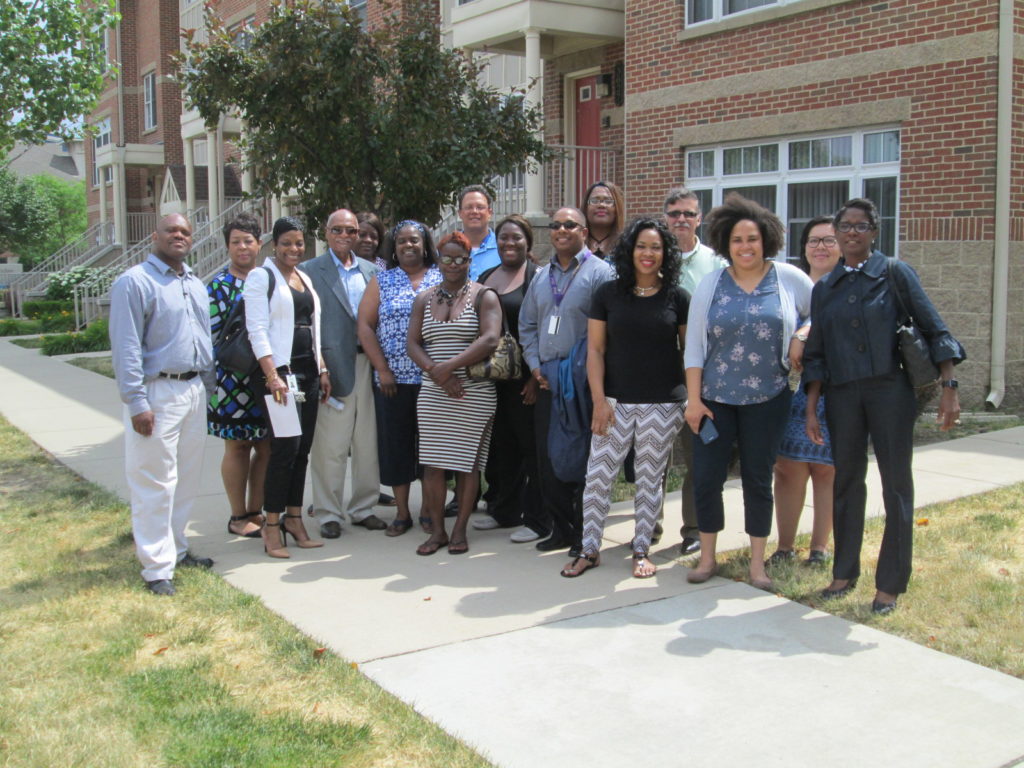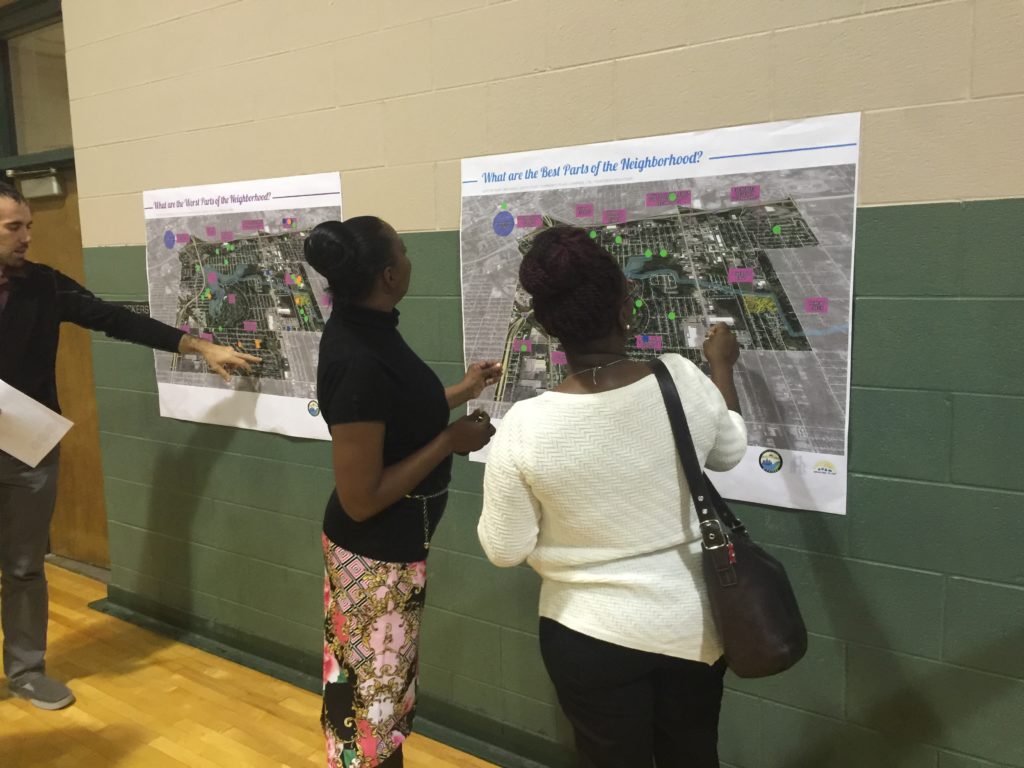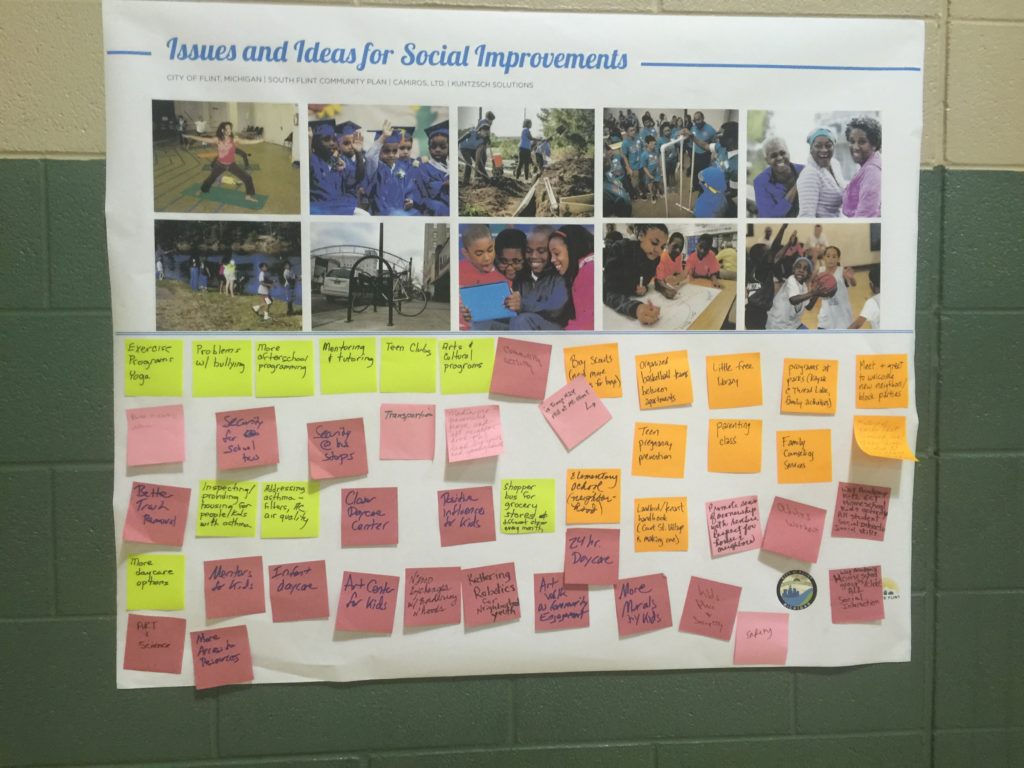Community: City of Flint
Population: 10,000+
The South Flint Community Plan is the result of a concerted, collaborative effort between the City of Flint, the Flint Housing Commission, and the people and neighborhoods in South Flint. The first community in Michigan to be awarded a U.S. Department of Housing and Urban Development Choice Neighborhoods grant, the South Flint Community Plan focused on generating a vision for housing, people, and neighborhoods in South Flint.
Building off the successes of the 2013 Imagine Flint Master Plan for a Sustainable Flint, the South Flint Community Planning process made it a primary goal to not only have residents, community partners, and stakeholders at the table, but also to ensure that participants had tools and information to actively engage, in addition to breaking down barriers and building trust between all partners. The final South Flint Community Plan is an expression of residents’ concerns and visions, with a clear path towards implementation.
Replicability:
The key features of the South Flint Community Plan are easily replicable in any planning process; the City of Flint has used the same ideas and principles in developing other community and neighborhood plans in the City. The planning process had three phases leading to the final South Flint Community Plan.
The initial phase was ‘Listening and Learning’ which involved resident meetings, resident surveying, and the creation of a resident-led Steering Community in order to assess neighborhood needs, collect data, identify priorities, and guide project development. Given the history of inequitable urban planning policies in Flint, this was a crucial step in order to ensure quality, resident-oriented changes were outlined.
The second phase was ‘Visioning for the Future’ during which a broad outlook for the future of the community was discussed and developed in groups of varying sizes. The Visioning phase also included two youth visioning events, where local youth were invited to share their perceptions and desires for their community. Youth participated in activities such as neighborhood visioning using toy houses and play-doh as well as keypad polling where they got to be in control of their own responses and see real-time results.
The final phase was ‘Strategy Development’ during which detailed strategies were developed for the Housing, People, and Neighborhood plan components. This phase included project working groups and roundtable sessions in Education and Youth, Health and Safety, Housing and Development, Jobs and Workforce, Neighborhood Access, and Neighborhood Enhancement. A key factor of this phase were early action projects. Residents and community partners were engaged in planning long term projects and execution of short term projects.
Creativity and Originality:
Atherton East residents, Flint Housing Commission officials, elected leaders, and City staff all joined in bus trips to visit recently-constructed mixed-income housing developments in Indianapolis, IN, Grand Rapids, MI, and Detroit, MI. While on the trips, attendees were given the opportunity to speak with local residents living in these new communities, local officials, developers, and public housing authority staff who worked to develop successful mixed-income/mixed-use housing. These tours were a critical and innovative way to build momentum and resident buy-in for the South Flint Community Plan. The trips helped broaden South Flint residents’ perspectives as they learned through tours and firsthand interactions with a variety of stakeholders about the positive outcomes of public housing redevelopment.
Another creative aspect of the South Flint Community Plan and its planning process was the emphasis on youth involvement. Two youth visioning sessions were held as part of the planning process. The first invited youth in South Flint to share what they liked and didn’t like about the South Flint area, what amenities they would like added, and where they should be located. The second was dedicated to Atherton East youth, where keypad polling was used to assess youths’ perception of their neighborhood and preferences for improvements. In addition to these two youth visioning events, youth were encouraged to attend and contribute to the broader community meetings along with their parents and guardians.
The direct engagement of public housing residents in the outreach and working groups for this planning process was unprecedented for the City and Flint Housing Commission. Both entities are proud of the time spent engaging with and hearing from residents as it greatly benefited the outcome of the final product.
Community Impact:
The South Flint Community Plan identified early action projects to be implemented in the near-term, in order to secure buy-in from the community and demonstrate how their participation can lead to tangible results. Residents voted on and implemented several of these projects, including a clean-up of Thread Creek, a resident-led audit of sidewalk infrastructure, and reinstallation of a bus stop within the Atherton East public housing development by Flint Mass Transportation Authority.
In addition to these early action projects and other projects outlined in the final South Flint Community Plan, a key impact these projects had in the community was equipping people with the tools and information to actively engage in the planning process.
Further, the direct involvement of City and Flint Housing Commission staff with these projects and smaller group gatherings of residents greatly added to the perception of reliability. Choice team members spent a good deal of time working on relationship building with public housing residents to develop trust. Collaboration moves at the speed of trust and resident participation was crucial to the creation of a useful plan and will be for its implementation.



